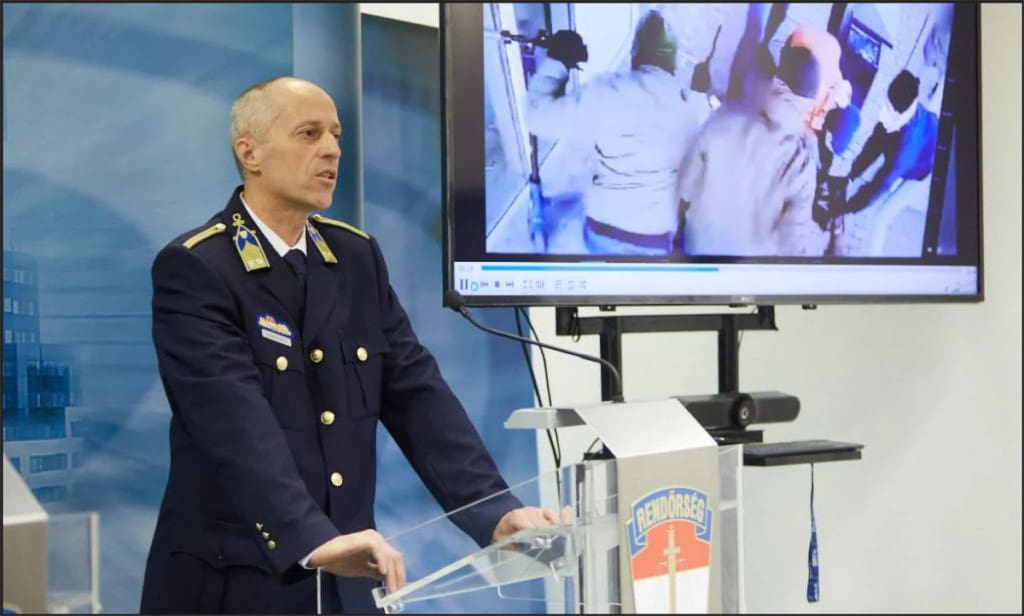Shocking surveillance video from Hungary captures left-wing extremists hunting down victims, hitting them with a blackjack and batons, and then kicking and punching them on the ground. According to police, all victims were mistakenly targeted under the belief they were part of a right-wing demonstration in the area.
Hungarian police have arrested six of the perpetrators involved in gang attacks that happened over the weekend in Budapest, Police Lieutenant-Colonel Béla Nyerges told a press conference on Monday. According to police, the left-wing attackers appeared to be operating under a mistaken assumption they were beating neo-Nazis.
Since the early 2000s, mostly German right-wing groups and some far-right individuals commemorate the Feb. 11 breakout attempt of SS and Wehrmacht troops from the Soviet blockade around Budapest in which some 20,000 almost exclusively German troops died.
Hungarian police said the attackers targeted mostly innocent bystanders — some of them foreign tourists and others locals — injuring at least seven of them, some of them severely. Police and the intelligence services are still looking for several of the 15 presumed attackers, but have already arrested six of them. So far, only one arrested individual is Hungarian, one is Italian and the rest are German citizens, according to Hungarian news outlet Magyar Nemzet.
Police say the group roamed throughout Budapest over the course of three days carrying out extremely brutal attacks. After the first attack, the Budapest Police Headquarters (BRFK) set up a special investigative team of 24 people, which was later expanded to 45 people.

In one of the attacks, seven or eight perpetrators attacked a group of three Polish citizens who had just left their cars and were going sightseeing. During the attacks, two of the Poles suffered serious fracture injuries, while their third companion escaped with bruises on his limbs and a laceration to his scalp.
In the video above, which was filmed the day after the Poles were attacked, a 40-year-old truck driver was headed to a tobacco shop in Gazdagrét when eight Antifa members beat the victim unconscious. While he was laying on the ground, they pepper-sprayed him in the face. According to police, the victim had nothing to do with right-wing politics, but he had been targeted because he was wearing military-style clothing.
In another attack, Zoltán T., a Budapest resident was attacked while returning home from work.
Police say the victims appeared to be targeted because they were wearing black boots, black jackets or other clothing that appeared to resemble that worn by right-wing demonstrators, such as green military jackets, which are also commonly worn by individuals who are not active in political circles. None of the victims had attended the demonstration, report police.
In the third attack, a Hungarian couple, László Dudog and his partner, were beaten while returning home from a concert; the victims of the fourth attack were a German couple also leaving a concert.
Police indicated they believe the attacks were politically motivated and that the group of left-wing extremists acted under the assumption that their victims were attending the right-wing protest.
Police have released footage of arrests made related to the attack where they revealed a variety of weapons found on the suspects, including hammers, lead gloves, iron pipes and pepper spray.
While Hungarian police only disclosed the number of the arrested attackers, German daily Bild identified them as Clara W. (22), Anna M. (26), Emilie D. (20), Moritz S. (20), Tobias E. (29) from Germany and Ilaria S. (38) from Italy. All are associated with left-wing extremist groups. The Germans were born in Saxony, Thuringia, North Rhine-Westphalia, Schleswig-Holstein and Lower Saxony.






